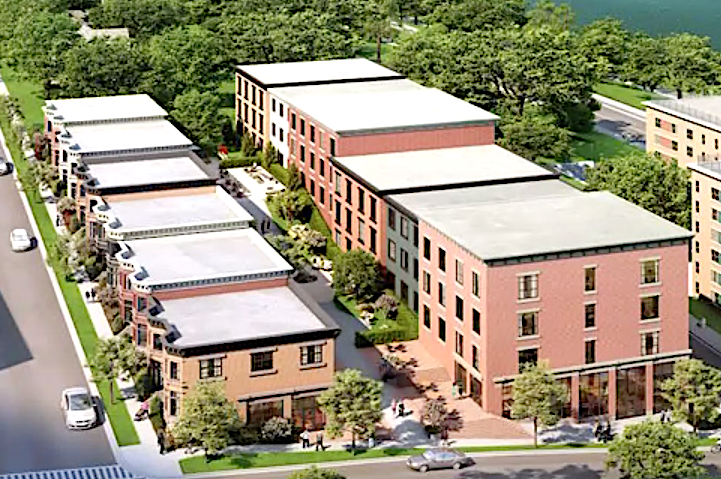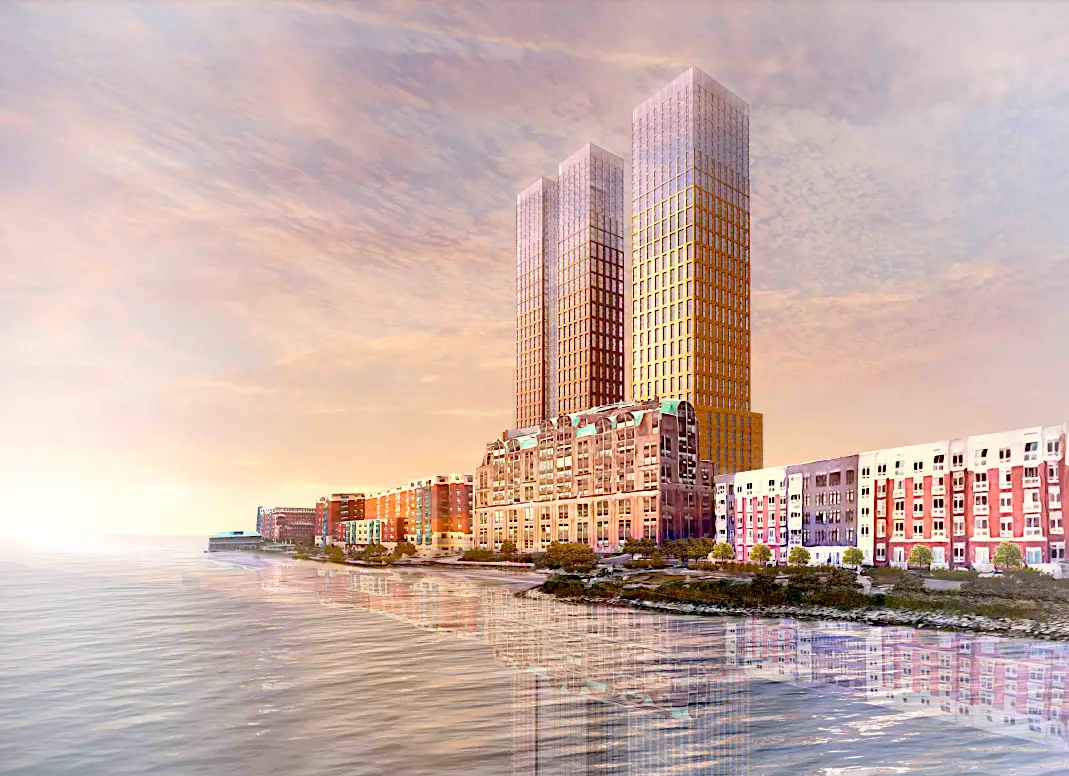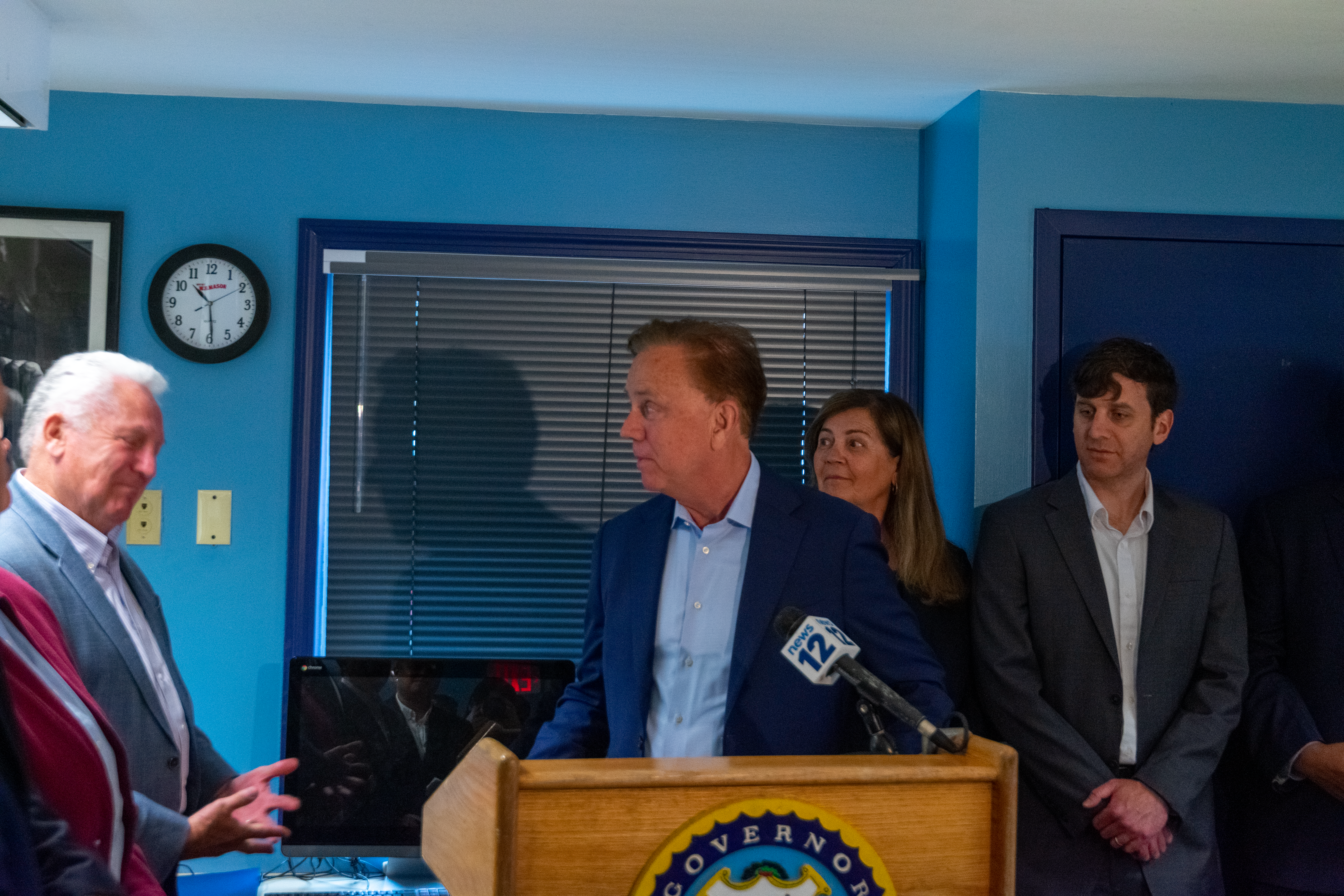The Kearney Realty & Development Group of Somers has presented plans for its proposed project at 140-146 Montgomery St. and 137 Smith St. in Newburgh to the city’s Planning Board. Kearney won development rights for the Urban Renewal property from the City of Newburgh in a competitive process. The three currently vacant parcels total about one acre. The buildings that had been on the land had been cleared for Urban Renewal.
Newburgh had received five responses from developers who were interested in doing something at the site. Those were narrowed down to two proposals and Kearney’s was selected.

The project has been named The Green and would include two buildings. Building 1 would be a three-story rowhouse containing 45 residential units. Building 2 would be a five-story building with 73 apartments, retail space of about 7,000 square feet and two levels of parking. It would front along South Street. Between the two buildings would be a lawn area for passive recreation, a public outdoor patio area and a playground area.
Rents for apartments at The Green would be set to be affordable for people earing 40%, 60%, 80% and 100% of the Orange County Area Median Income (AMI).
Kearney’s submitting of plans for the construction marks a step forward in a process that included the city inviting developers to submit proposals for developing the Urban Renewal lots, public hearings and the city setting the stage for transferring the Urban Renewal parcels for development.
In making an initial presentation to the Newburgh City Council, Sean Kearney, vice president of Kearny Realty & Development Group, said the group is family owned and operated and develops, constructs and manages all of its properties.

“We have developed over $400 million worth of development of residential construction throughout New York state,” Kearney said. “We’re one of the leading developers in New York state for middle-income housing. In the past five or six years we’ve really focused and specialized on downtown revitalization, community revitalization and mixed-income developments.”
Kearney said that their guiding principle for The Green was to create an innovative mixed-income and mixed-use new construction development that promotes the physical revitalization of the surrounding neighborhood.
“We wanted to find a way to provide diverse housing opportunities through affordable housing and multiple income levels, not just reaching very low-income and not just reaching 100% AMI,” Kearney said. “We’re trying to hit that missing middle. We wanted to provide opportunities for neighborhood-scale businesses. We wanted to implement a comprehensive workforce development plan and create equitable opportunities in the city.”
Kearney said that the building along Smith Street is designed to look like numerous multi-family buildings and the building along Montgomery Street is designed to look like individual brownstones.
“There is a mix of one-bedroom, two-bedroom and three-bedroom units,” Kearney said. “It honors the neighborhood’s historical context. It recreates a community and physical environment that once existed pre-Urban Renewal. It’s designed in conformance with the East End Historic District’s guidelines. It creates no visual disharmony with the surrounding community and we need no variances. We’re completely compliant with zoning but for parking. We have about 80 parking spaces designed between on-site and off-site.”
Kearney said that the project would include community gardens and that free Wi-Fi would be provided for all of the residents. He said the buildings would be LEED certified and comply with state green building and energy efficiency initiatives.
Kearney said that the retail spaces would be targeted to appeal to the surrounding community as well as residents of the development. He said that one of the commercial spaces would be designated for a local small business and he proposed that the city issue a Request for Proposals to select the business. He said that the rent could be as low as $6.50 per square foot for the first three years, a break-even level for the developer.
“One of the biggest struggles of small business in their first or their second year is, ‘how do I pay the rent,'” Kearney said. “Now, they don’t need to worry about that. They can focus on their business and how do they improve their business.”





















